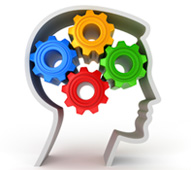We cannot deny the fact that there has been technological progress made in all fronts, including in the field of translation.
Until the 1970s, machine translation hardly ever left the laboratory setting. The use of machine translation began to spread maybe out of necessity or curiosity. Today, almost forty years later, we can say that what began as an experiment is a reality in our industry.
Of course, we know that machines cannot replace human translators. However, we cannot pretend that it doesn’t exist. Machine translation exists, and it is increasingly used by translators, agencies and clients.
This is where the term “post-editing” comes from. Post-editing is the process of editing an automatic translation. For instance, we can work with Google Translate within a bilingual document, using Trados (and creating a translation memory, which may be helpful for future reference).
As we run the commands, the automatic translation is displayed, segment by segment. Of course, the editor’s job is very important, given that human interpretation of the text in question is necessary.
What can be expected
From the finished product point of view, the post-editing task must be approached as a regular editing task. The editor must take the automatically translated text and polish it the same way he would a translation by a human being. The fact that a translation was done using AT tools does not mean that an editor can lower the editing quality (on the contrary, in some cases, I think it’s even necessary to pay even more attention, since the machine has no analysis capabilities).
When to use post-editing
The types of text that are best fit for AT are technical or scientific documents with limited vocabulary. By limited, I mean the number of meanings that a word can have. While we are faced with the complexity of the technical/scientific field, we know that the higher the degree of technical complexity is, the more specific the translation of the word must be, and the more likely that the machine will choose the right word.
The kinds of texts that are the least recommended for machine translation are literary works (novels, poems, etc.), given that they require great interpretative qualities, and also because the author’s intention is a key element in literature. Therefore, the post-editing job would end up being so large and complicated that we would end up having to re-translate the whole document.
In order to continue adapting to the industry’s reality, we should remain open to the possibility that this is a trend that is increasingly growing, especially in the case of industrial translations.






